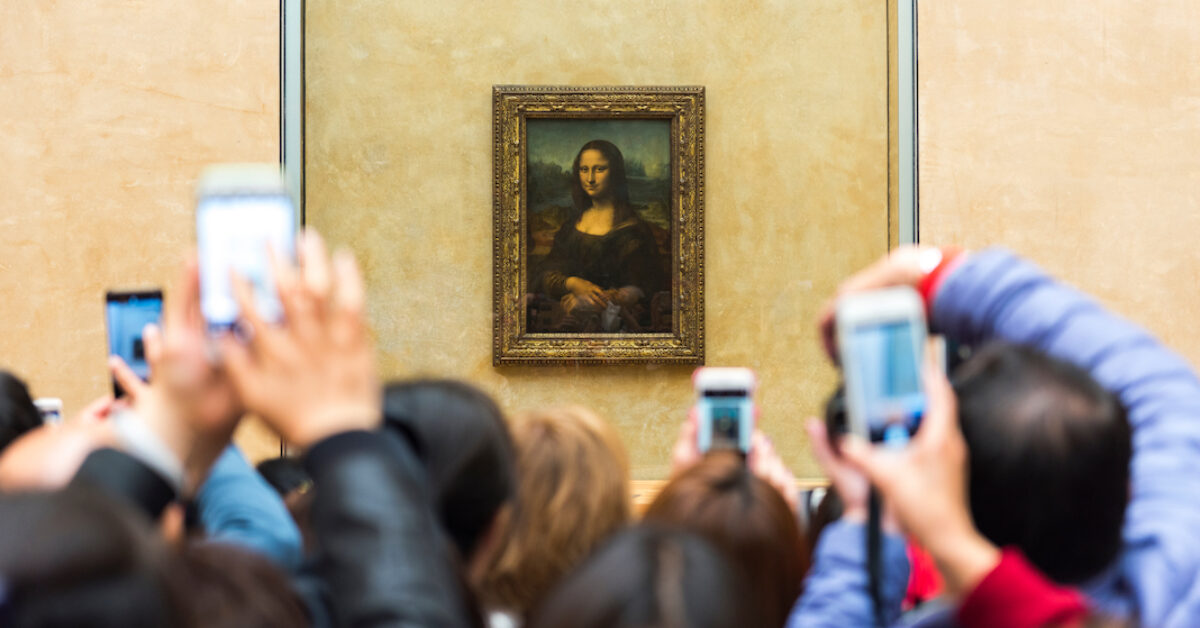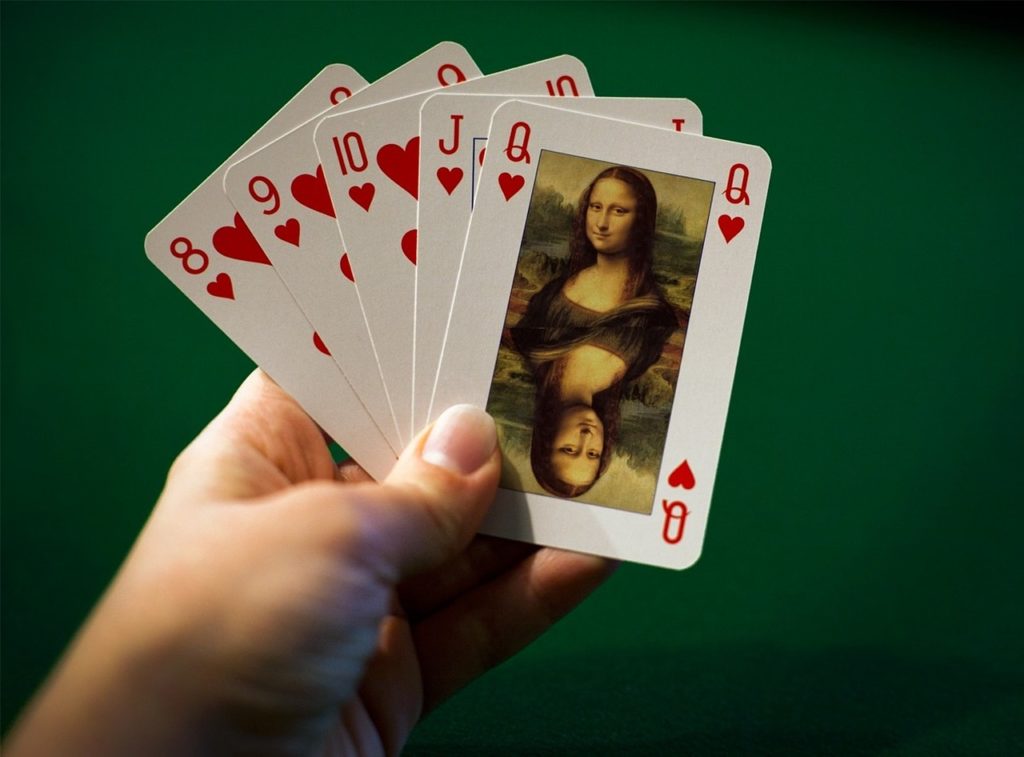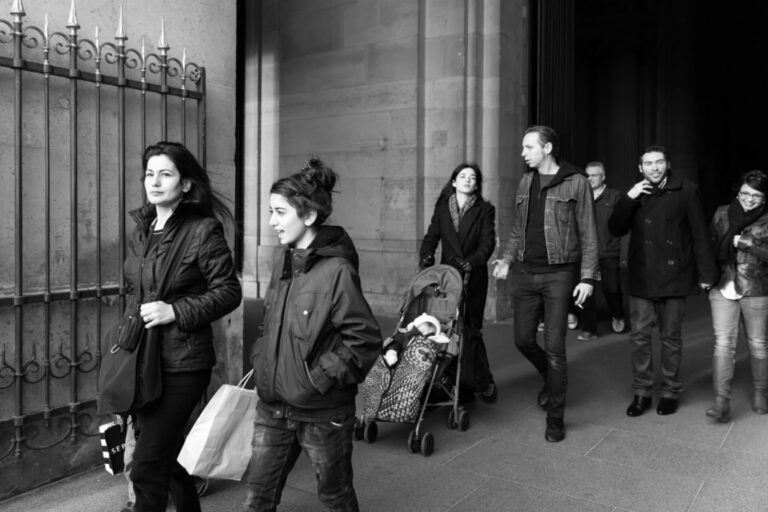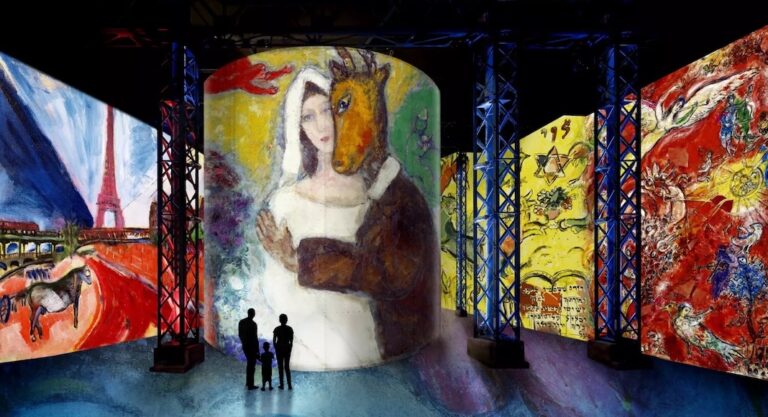More than 20,000 visitors pass by it every day, and nearly 330,000 objects made in its image are sold every year. Leonardo da Vinci’s famous painting is one of the few works that everyone instantly recognizes. To limit the risks associated with such recognition, in 2005 the Louvre mounted it on the wall behind a layer of bulletproof glass. It is better that way because, in 1956, a young Bolivian man threw a stone at the painting and damaged her elbow. Just last year, a Russian tourist threw a drink in her face. What is the fuss over this painting?
First impression: The Mona Lisa is striking. No Italian portrait had ever been framed so widely before. The entire upper body is represented, including the arms and hands, and the balance is perfect. With the very fine folds of her clothes and her long, elegantly crossed hands, the portrait exudes a great serenity. This is not the case for the strange and deserted landscape in the background. It’s like being on the moon! The atmosphere is bathed in mist, depicted thanks to the famous sfumato technique invented by da Vinci, which makes it possible to blur the contours.

Look at this contrast as well. The right side of the face shows a smile, but the left side shows an indefinite expression. Legend has it that she follows us with her eyes when we move. Is that true? Yes, and that’s why we feel like we’re exchanging looks with her, which makes her incredibly alive. But you will see, you can do the same experience with most painted portraits. In short, there are plenty of ambiguities… They give rise to the craziest interpretations: it has been said that she was a man, a self-portrait of the artist disguised as a woman, or that she suffered from paralysis!
An enigmatic beginning
So, is the Mona Lisa a masterpiece? Yes: its technical and aesthetic achievements are undeniable. But most art historians agree that it is in no way superior to Leonardo da Vinci’s other works. The real reason for its fame is its history, full of mystery and adventures.
First enigma: it is not clear when Leonardo da Vinci painted it, perhaps between 1503 and 1506. The second uncertainty is the identity of the model. Is it a gioconda (in Italian: a smiling woman) or the young wife of Francesco del Giocondo, a Florentine merchant? She has become so familiar to us that we call her by her supposed name anyway, Mona Lisa. Third mystery: we do not know how the work fits into the French collections. Da Vinci loved this portrait so much that he never parted with it. In 1516, he took it with him when he was called to the court of Francis I, then King of France. Then we lose track of it.
The fact is that, when she entered the Louvre in 1792, she had already acquired a solid reputation. The expression on her face and the sfumato are so difficult to reproduce that it impresses all painters. In 1800, to better admire it, General Bonaparte even had it hung in his bedroom! In the 19th century, it was the romantic poets who became passionate about Mona Lisa. They find her to have a little femme fatale look… But at that time, her notoriety did not yet exceed the limited circle of artists and a few connoisseurs.
A disappearance that made people talk
Everything changed on August 20, 1911, when Mona Lisa was stolen by an Italian worker employed at the Louvre. He hid it under his bed for two years and, during that time, the newspapers never stopped about the case. Thousands of people (including the writer Kafka) rushed to the Louvre just to contemplate… an empty site! The new media of photography and postcards made it possible to widely disseminate an image during an absence. In other words, the moment she disappeared, she appeared everywhere: on the front page of newspapers, on chocolate boxes, and even in the movies, in a film about her disappearance.
The police eventually found the thief when he tried to sell the painting to an antique dealer in Florence in 1914. For its return to the Louvre, La Joconde was welcomed with the fanfare deserving of a star. The result: like any adulated object, it also evokes a reverse reaction. Cartoonists enjoyed parodying it and the artist Marcel Duchamp added whiskers to it and named it L.H.O.O.Q. (read it aloud).
Everyone knows her face
She, who for a long time represented an inaccessible model of beauty, has become a popular, almost tacky figure! Advertising uses it to sell toothpastes, cosmetics, soft drinks…. But it also continues to fascinate artists. Many of them go on to create their own version. René Magritte, in 1962, had an aerial and poetic vision of it. Jean-Michel Basquiat, in 1983, gave her a much more aggressive treatment, and in a 1994 watercolor by Christophe Vigouroux, she seemed distant, as if drowned in an artistic blur.
At the same time, she offers herself some official trips. In 1963, she was escorted to New York, where she was triumphantly exhibited at the Metropolitan Museum. Then in 1974 to Tokyo where, due to the crowds, the time allowed to each visitor to admire Mona Lisa was limited to nine seconds! Today, there are hardly any tourist brochures on Paris in which it does not appear. No wonder so many visitors continue to rush to see .
If the Mona Lisa is so famous, it is because of its history. It does not in itself distinguish itself from many other important works. Like all masterpieces, it owes its status not only to its qualities, but also to the adventures surrounding its destiny and the use that society makes of its image. The life of masterpiece, one that we made.
Article extract from DADA magazine, “What is a masterpiece,” by Alexandra Favre
This article was first published on Le Point.
Featured image: Stock Photos from Resul Muslu /Shutterstock







